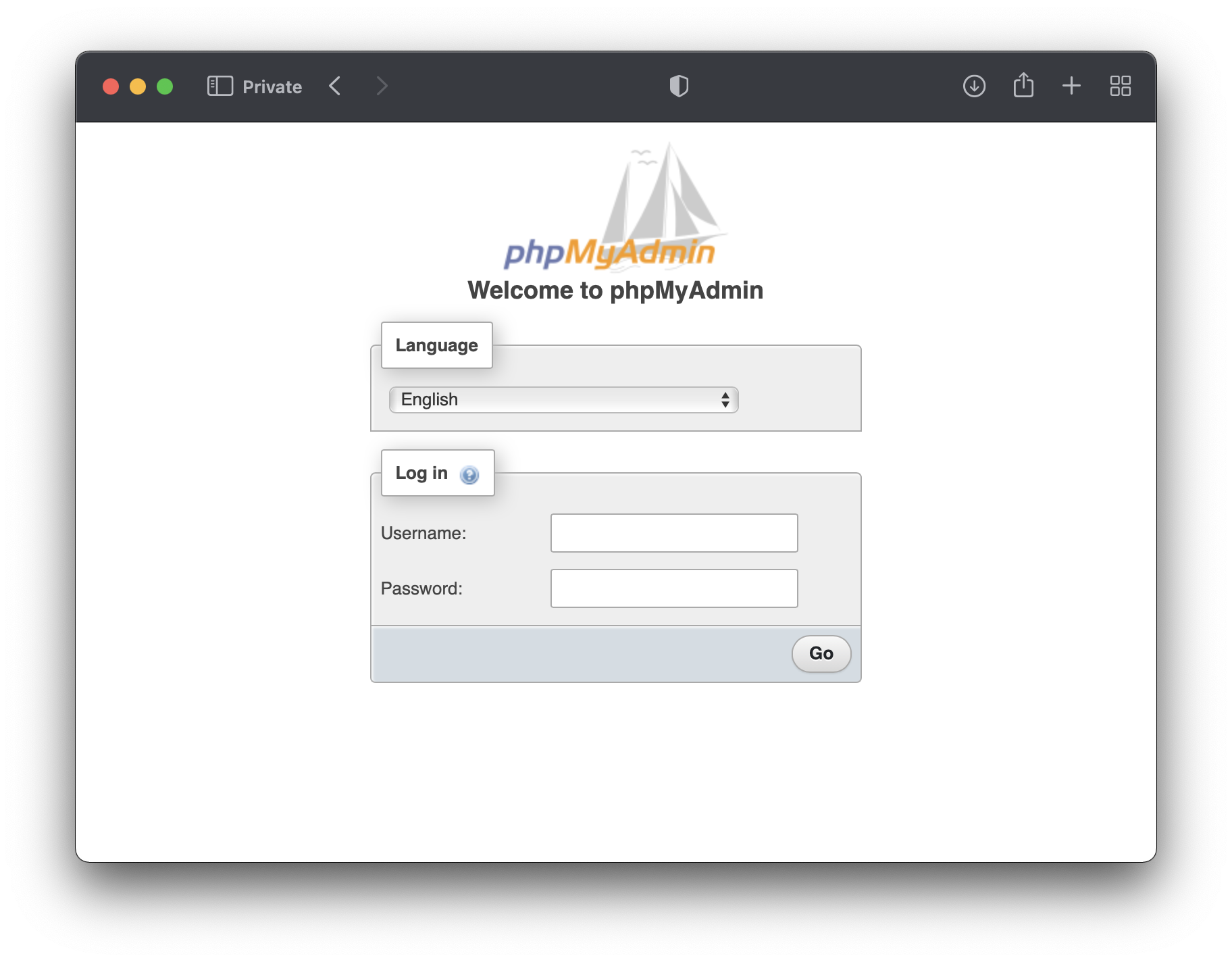phpMyAdmin
To run the phpMyAdmin web tool using Unit:
-
Install Unit with a PHP language module.
-
Install and configure phpMyAdmin’s prerequisites
-
Install phpMyAdmin’s core files. Here we install them at /path/to/app; use a real path in your configuration.
Make sure to create the config.inc.php file manually or using the setup script. -
Change ownership:
Run the following command (as root) so Unit can access the application directory (If the application uses several directories, run the command for each one):
console # chown -R unit:unit /path/to/app/ # User and group that Unit's router runs as by defaultThe unit:unit user-group pair is available only with official packages , Docker images, and some third-party repos. Otherwise, account names may differ; run theps aux | grep unitdcommand to be sure.For further details, including permissions, see the security checklist.
-
Next, prepare the phpMyAdmin configuration for Unit (use real values for share and root):
json { "listeners": { "*:80": { "pass": "routes" } }, "routes": [ { "match": { "uri": "~\\.(css|gif|html?|ico|jpg|js(on)?|png|svg|ttf|woff2?)$" }, "_comment_match": "Enables access to static content only", "action": { "share": "/path/to/app$uri" }, "_comment_action": "Serves matching static files" }, { "action": { "pass": "applications/phpmyadmin" } } ], "applications": { "phpmyadmin": { "type": "php", "root": "/path/to/app/" }, "_comment_root": "Path to the application directory; use a real path in your configuration" } } -
Upload the updated configuration.
Assuming the JSON above was added to
config.json. Run the following command as root:console # curl -X PUT --data-binary @config.json --unix-socket \ /path/to/control.unit.sock \ # Path to Unit's control socket in your installation http://localhost/config/ # Path to the config section in Unit's control APIAfter a successful update, phpMyAdmin should be available on the listener’s IP address and port:
